The London Boat Show, Excel Centre, January 2007
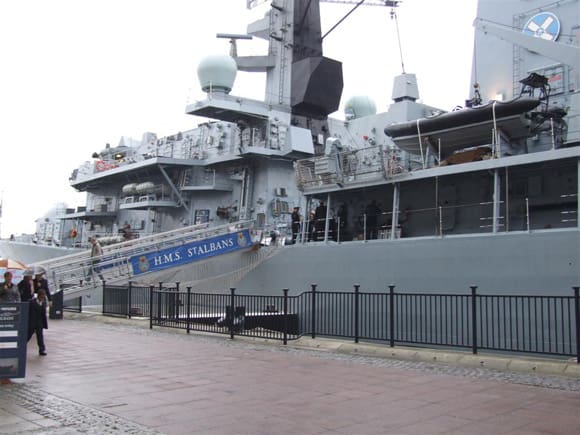
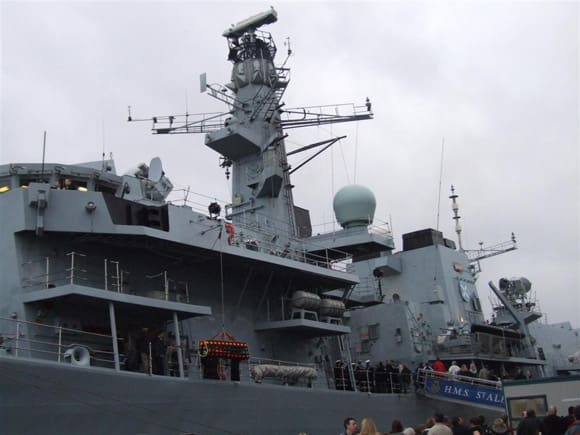
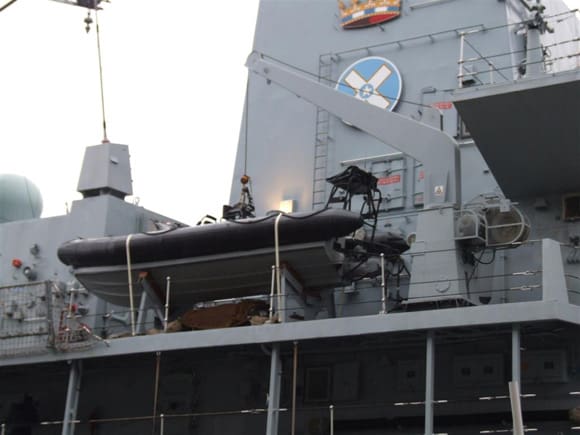
It is always worthwhile, if the opportunity presents, to visit shows or events where full-size leisure craft are on display, if only to see how the mega-rich and not so rich live, but also to understand how technology is advancing and why motor yachts and other craft are indeed now as they are.
This particular event, which runs in early January every year, is at the Excel Centre in Docklands, East London and features yachts and motor craft of all types, both on static display and afloat. The venue is very easy to reach, being right next to Custom House on the Docklands Light Railway and consequently connected to the national rail network via the Jubilee Underground Line. Entry fee was £14 (less in advance) for a single adult, with family packages available. Parking for a day is not cheap, so unless it is a family outing by car, public transport is best. There are no problems for disabled access. The programme, show details and free newspapers etc. were included. Refreshments in the venue varied from the inexpensive, such as an enormous Cornish pasty for £3.50, to full blown top notch seafood restaurant meals – you take your choice.
Once inside – the admissions process is still very quick even if you haven’t got a prepaid ticket – there is a central mall with a North Hall on one side and a South Hall on the other, what a surprise! The South Hall tended to have the large luxury motor yachts from the likes of Sunseeker, www.sunseeker.com, Princess, www.princessyachts.com, Ferretti, www.venturaeurope.com, Broom, www.broomboats.com and Fairline, www.fairline.com, whereas the North Hall had smaller craft plus larger cruising yachts as well as some canal boats, a restoration area, clothes and equipment, etc.
Enjoy more Model Boats Magazine reading in the monthly magazine.
Click here to subscribe & save.
Outside were the floating exhibits, including H.M.S. St. Albans, which is a Type 23 Frigate that was open to the public, Photos 1, 2 & 3. The leisure craft that were afloat (20+) included a lifeboat and one of the largest Sunseeker motor yachts around. The RNLI were well represented as well.
Anyway what was of interest?
Undoubtedly H.M.S. St. Albans, but the Sunseeker stand, Photo 4 was the largest and most impressive. You had, as with some of the other exhibitors, to make an appointment to view and no outside walking shoes – the decks are too precious! The smaller speedboats from Chris Craft, Photo 5 evoked memories (model kits are still available) and this ‘Sea Legs’ rigid inflatable which is amphibious, price £39000, Photos 6, 7 & 8. Web site is www.amphibiousribs.com was unique.
This rigid inflatable is designed to be able to travel over a beach and then perform very well on the water. It can sit down either at the bows or stern or indeed both and the wheels are above water when afloat. The operator demonstrated the boats ability to ‘sit down’ very effectively. It originates from New Zealand and it is not legal to drive on a normal road, but avoids the need for a trailer for launching, although it does of course need a trailer for it to be taken to the beach area.
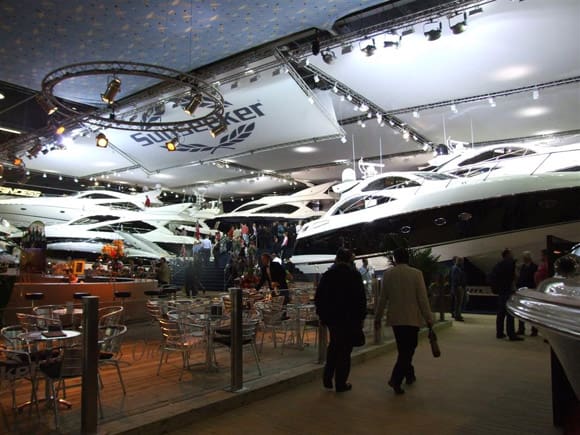
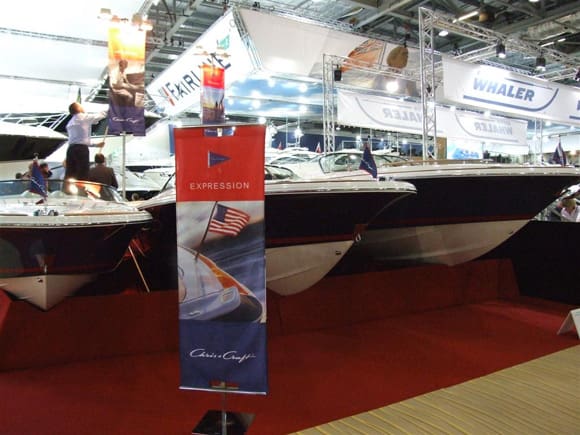
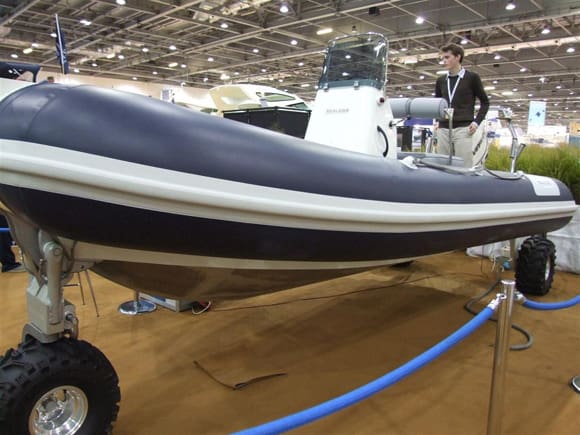
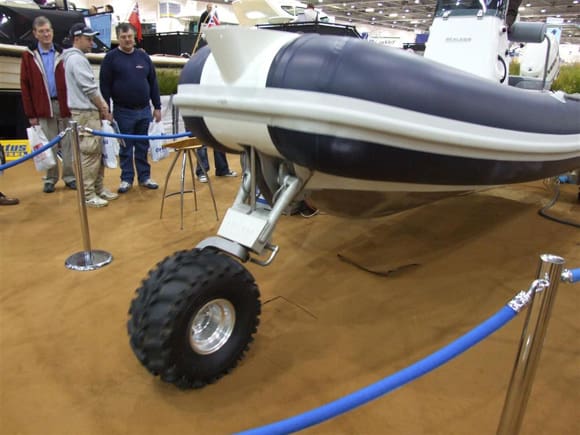
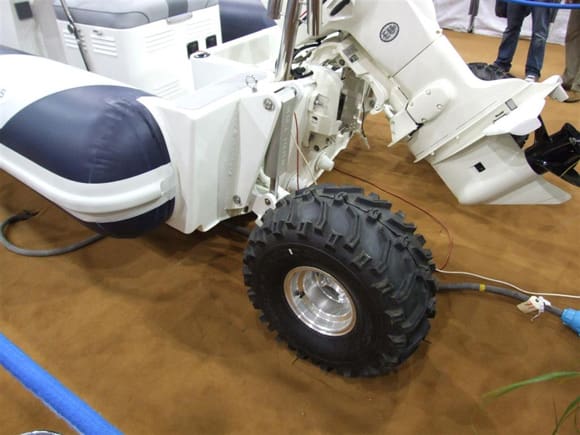
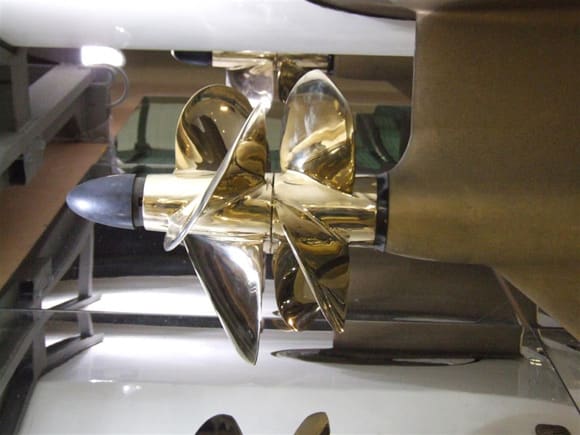
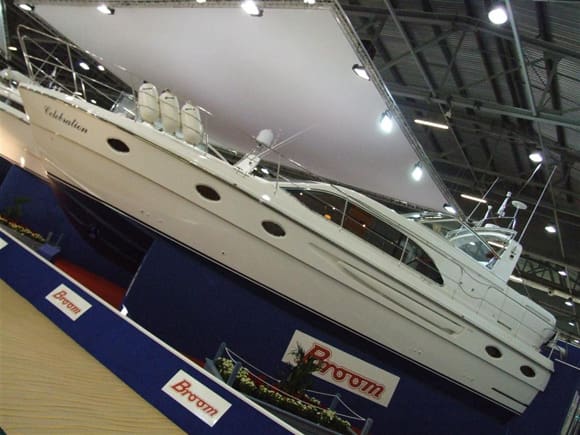
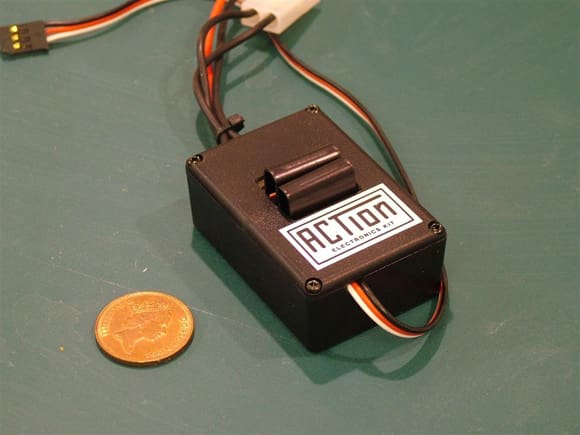
The propulsion arrangement on this Italian luxury motor yacht was interesting, Photo 9. There are two propellers, one of both left-hand and right-hand, on a pod that can rotate upon its vertical axis for manoeuvring. The builder is Cranchi, www.cranchi.co.uk and the craft is the Mediterranee 43 Open Sports Boat and the price a mere £260,000!
Broom had a stand with their range displayed, Photo 10, and of course The Model Slipway which is a regular advertiser in this magazine offers a fine kit of one of this range. These craft stimulated the ‘desire’ buds – all beyond the reach of Paul’s pocket (so he says!), but the point of the exercise is that we tend to build scale models of powered working boats, but there are numerous examples of craft that lend themselves to building a highly detailed original model that is a bit different. There are kits available from most of the major manufacturers as well as The Model Slipway of motor yachts/pleasure craft and indeed some of motor sailors (Dean’s Marine), which of course can give us double pleasure in both being powered (to get you out of trouble) and actually sailed, which requires a different set of skills.
All in all an excellent day out, but not too much for children to do. If your partner has no interest in yachts and motor cruisers, then there is probably not too much for her either. The show concentrates on pleasure yachts both powered and sail with their associated equipment, but there are not loads of stalls selling non-boaty stuff.
The specialist clothing available, although in many cases not cheap, will keep you dry in the worst possible weather conditions. On that subject, does anyone remember the MPBA Scale Nationals held at Peterborough in the 1990’s where it bucketed all day and the field where the cars were parked became a swamp! The second OTW round was made optional, because the first took so long due to the weather and everyone was fed up by mid-afternoon! Keith Young (and his family) were, if Paul’s memory serves him correctly, dressed in proper sailing waterproofs and were the envy of all of us. Keith still competes successfully and regularly at national level.
So, The London Boat Show is the sort of event which you will go to once every five to ten years or so, if you have more than a passing interest in boats of all types. The websites given above are worth a look.
R/C Electronic Speed Controllers (ESC’s)
For most of us, all we want with a powered scale model boat is that it goes both forward and astern, with the power being delivered in a controlled and proportional manner. We do not want reverse braking as with R/C cars and we probably want the motors to stop in the event of loss of signal and for them to start again normally, if we move the transmitter closer to the model. With modern equipment this should not happen, but occasionally it does for a variety of reasons. What can occur rather annoyingly is that with some controllers which set themselves to the transmitter settings, if there is a loss of signal and then control is regained for whatever reason, the ESC sets itself to wherever the control stick is positioned at that moment in time. We have I am sure, all done it – nothing is happening – and then the model zooms off because the signal has been regained but the operator had the throttle stick at maximum, when everything suddenly bursts into life again. Therefore if you are moving the throttle stick to see if anything happens and then ‘contact’ is made, it can be that the speed controller resets itself and perhaps not as you would wish.
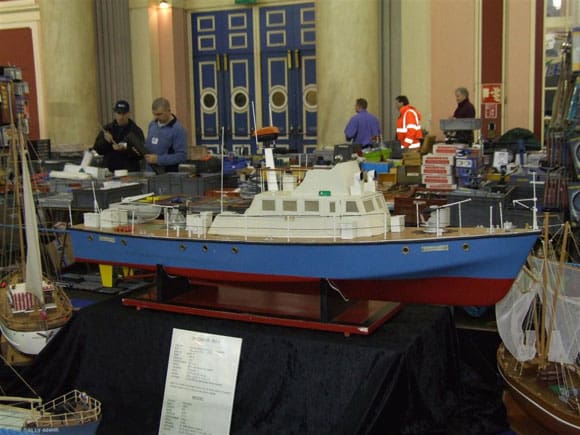
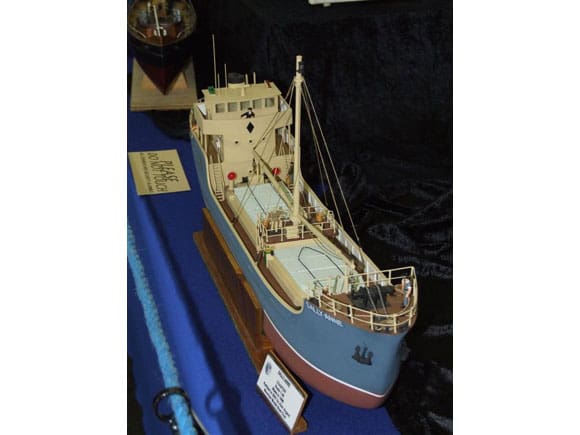
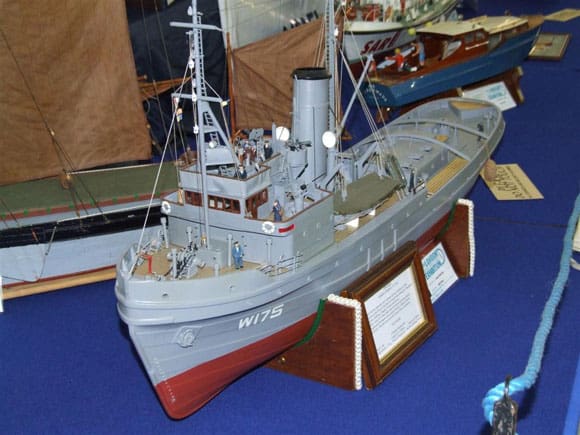
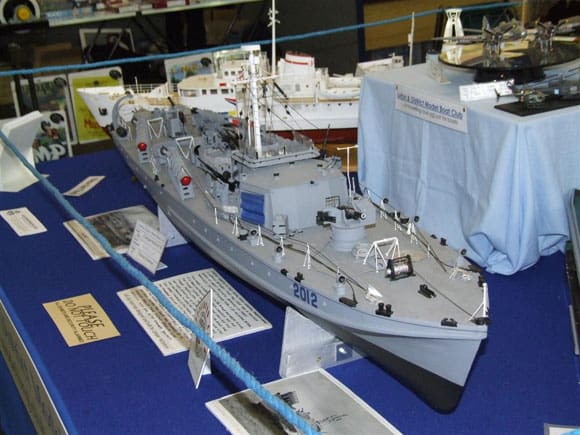
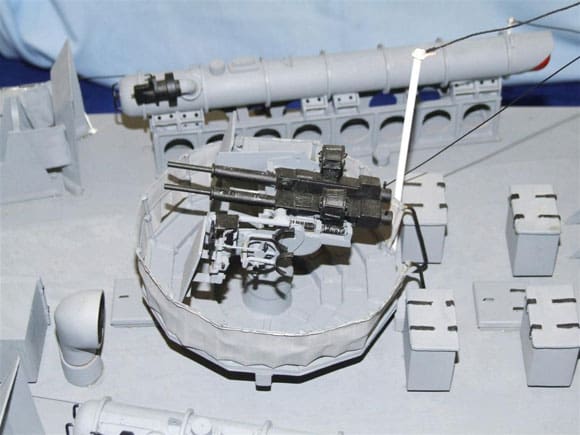
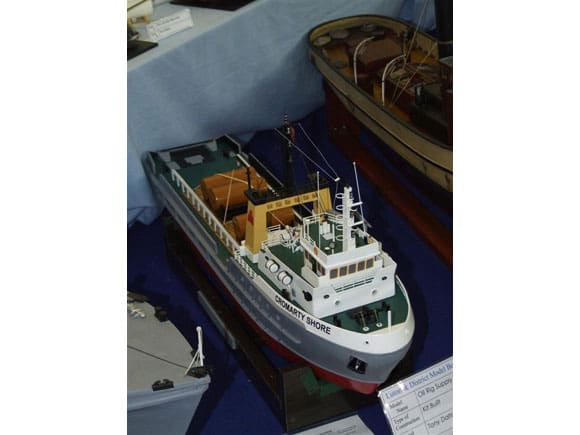
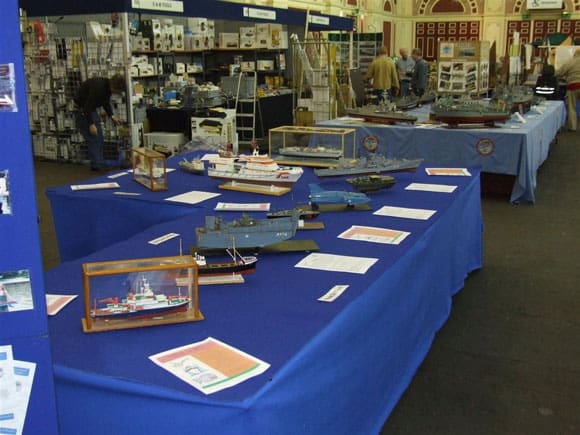
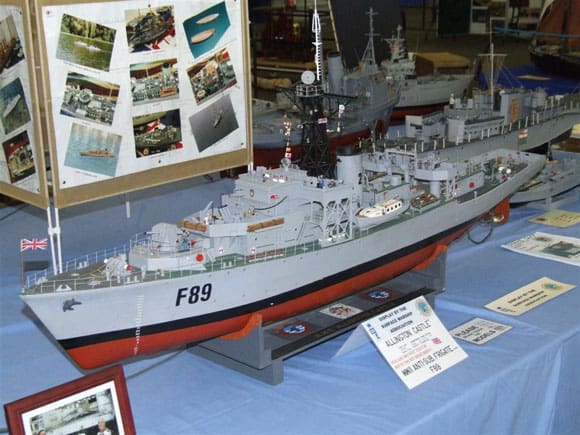
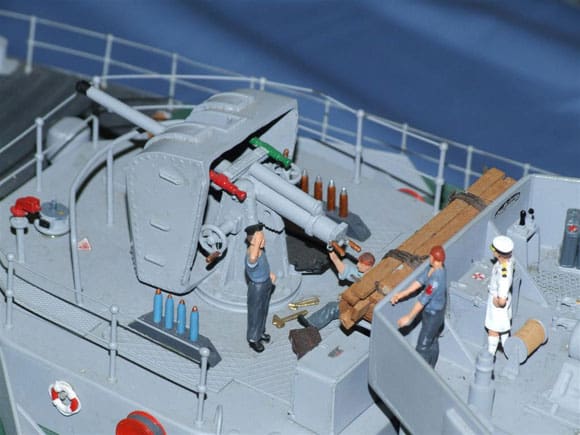
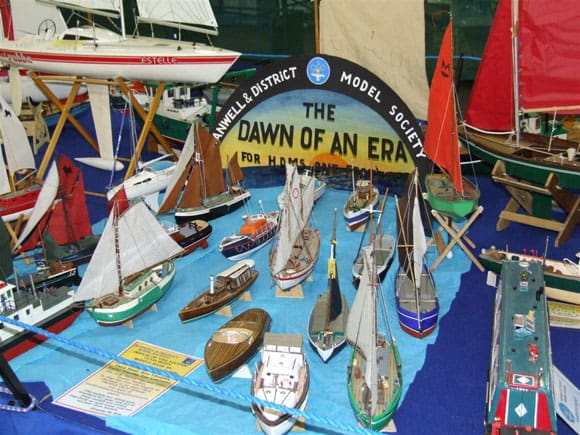
So, in many ways all we want with a scale model boat is a simple forwards and reverse controller with a minimum of electronic adjustments and Craig Talbot of ACTion, www.actionkit.co.uk/, Tel: 01767 681564, has remained true to these aims with his Condor range. His website is also up to date with current prices and that is important. A little moan here, is that some manufacturers set up a website and then rarely do anything with it. We think the web is an important selling and information tool and when properly maintained and updated is a useful marketing tool. If it is not updated often, surfers will tend to ignore it. The version shown here, Photo 11, is the Condor 20/2 which is rated at a maximum current of 20 amps and 2-12 volts. The reversing relay is powered by the receiver battery. Performance is the same forwards and reverse. It is not waterproof. Price is a reasonable £29 ready assembled.
It is very simple, with only a gentle or rapid start internal adjustment, there are no initial set-up button(s) to manipulate and it is durable. In many ways the Condor Speed Controller range continues in the style of the Fleet ESC’s of which Paul still has two (eight plus years) old and these are still 100% reliable.
ACTion has a complete range of electronic speed controllers including mini units, mixers and special effects modules which can be self built, or for a nominal amount are supplier built and tested. The only task left to the user is to cut the appropriate holes in the cases, as appropriate. Paul has had a couple of these particular ESC’s that have proved 100% reliable and as with much of our model boat ‘cottage industry’, Craig prides himself on giving a first class after sales service if need be. Finally, he also sells a suitable range of motors at very reasonable prices.
London Model Engineering Exhibition
Held in the Great Hall at Alexandra Palace, the London Model Engineering Exhibition takes place towards the end of January each year. For 2007 the organisers had taken more of the floor space to increase the size of the exhibition. For the first time we had indoor model aircraft and model helicopters flying, as well as a small boat pool. One of the best features is the provision of seating to allow one to sit and chat with old friends, to eat and drink or simply to relax. The venue also has free car parking – a considerable benefit for a London location.
On entering the exhibition floor we made our way to the club stands, beginning with the model boat clubs before having a look at the model engineering stands.
Photo 12 is of Alec Bliss’ Sangsetia. Alec’s notes tell us that the original was built by Vosper Shipbuilders in Singapore and had a length of 86ft 3ins and a beam of 18ft 9ins. With a displacement of 80 tons, the vessel could reach 29 knots powered by its twin 2,700hp Mercedes Benz diesels. The model has an overall length of 43ins and a beam of 9.25ins. The weight is 15lbs and it is powered by two 540 motors. The hull and plans were supplied by Metcalf Mouldings.
On the same stand was Alan Argent’s Sally–Anne coaster, Photo 13. This was scratch built on a BP Leisure hull. Powered by an electric motor, power is supplied from a 6V 4Amp battery which also powers the mast, deck, internal and navigation lights. The model also has a diesel sound generator.
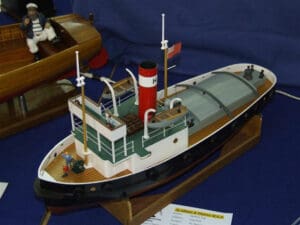
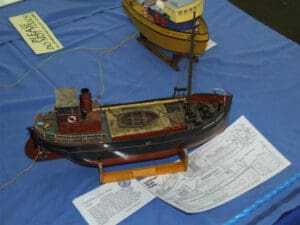
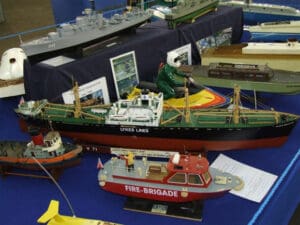
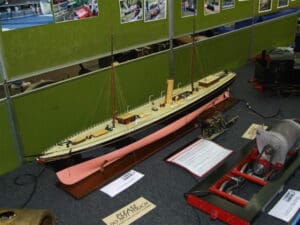
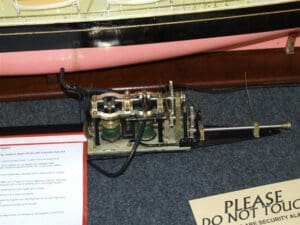
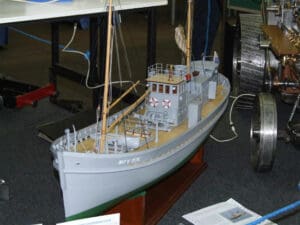
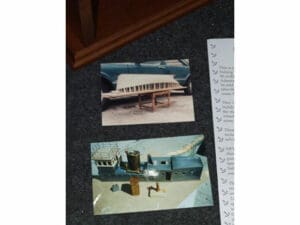
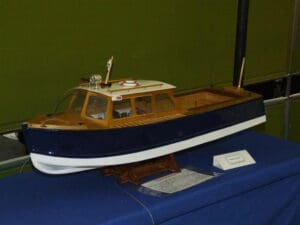
Over on the Broomfield Club stand was this version of the Model Slipway Envoy Class tug, Photo 14. Michael Wood had built his model as the Enigma, one of the class of six. The model is to a scale of 1:48 which converts to a length of 1108mm. The displacement is 11.5kg.
Photo 15, taken on the Luton Model Boat Club stand, is of Thomas Chatman’s Camper Nicholson MTB. Thomas has scratch built his model to a scale of 1:24. Four channel radio control is used, one for the steering – the three rudders are coupled together – and one channel each for the three Hurricane 650 drive motors each of which is supplied via a Ripmax speed controller. Each motor drives through a scratch built 4:1 reduction gearbox. Power for the motors and radio is supplied by a bank of four 9.6V 3,300mAH NiMH batteries connected parallel. Photo 16 is of some of the detail of the model’s armament.
On the same stand was this model of the Oil Rig Supply Vessel Cromarty Shore, Photo 17. We remember this as a kit from Patrick and Blunt Models in the 1980’s. This model was owned by Tony Dalton who had refurbished it from a pile of bits. Using the Model Boat Forum Tony had tracked down someone who could help with photos of the model plus a photo of the original full size vessel.
Adjacent to the Luton Club stand was the MPBA stand. Manned by Dave Abbott, the emphasis this year was on ‘Plastic Magic’ which now forms a MPBA class – Mini Ships. As Dave is one of the leading experts of this type of model making, he was on hand to offer advice to anyone who wanted to have a go at this lower cost modelling. As the MPBA stand, Photo 18, was just across the walkway from SHG who can supply this type of kit, Dave probably had a busy day!
We may have featured this model in the past, it’s quite impressive. Photo 19 is of Barry Chapman’s Allington Castle WW2 Anti-Submarine Frigate of 1944. The model is built to a scale of 1:48. Photo 20 is of some of the model’s detail.
The Hanwell and District Model Society had a display within a display on their stand, Photo 21. This featured a range of their 12in model boats built from a variety of materials – wood, plastic as well as paper! All the models use standard radio equipment.
There are still a lot of modellers out there who cut their (modelling) teeth on designs by Vic Smeed, editor of Model Maker/Model Boats up to the time of our present editor, John Cundell. Vic designed all sorts of models, and on the St. Albans stand we spotted this model of a harbour tug, Photo 22, based on a Vic Smeed design. The builder, Alan Holt, had updated and modified the design to suit his own requirements. The model was built to 1:48 scale – up from the original 1:72. The basic construction was plank on frame instead of bread and butter. The superstructure was modified to improve access, a Kort nozzle was fitted and the model was now radio controlled. The model is powered by a 545 motor. The original design was the tug Bustler.
The next model may also have been based on a Vic Smeed design, we’re not sure. Geoff Fletcher had built his Clyde Puffer based on a free plan in Model Boats, Photo 23, although he had used a commercial hull. The model was to a scale of 1:48. Geoff’s model was on the Anglia Marine club stand.
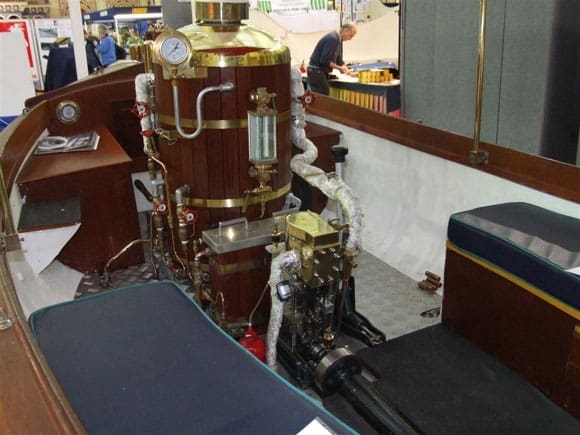
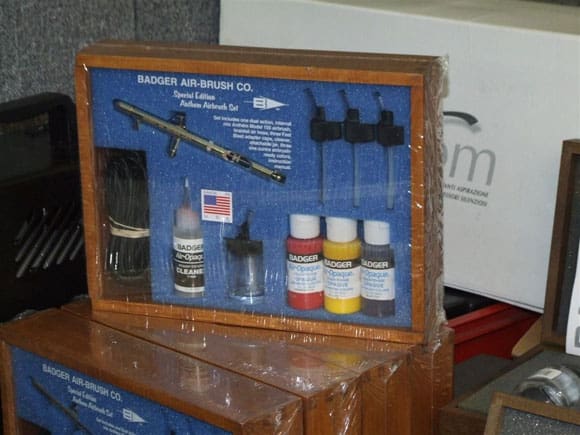
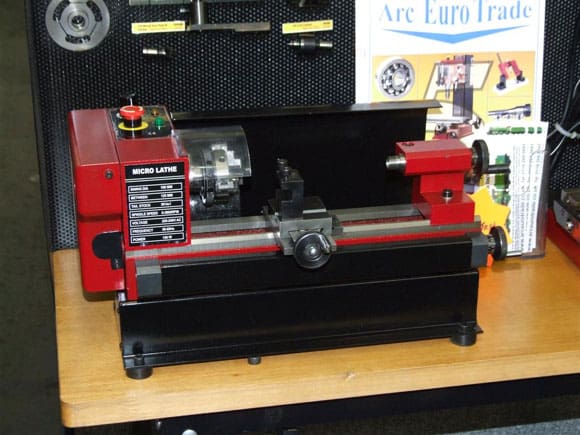
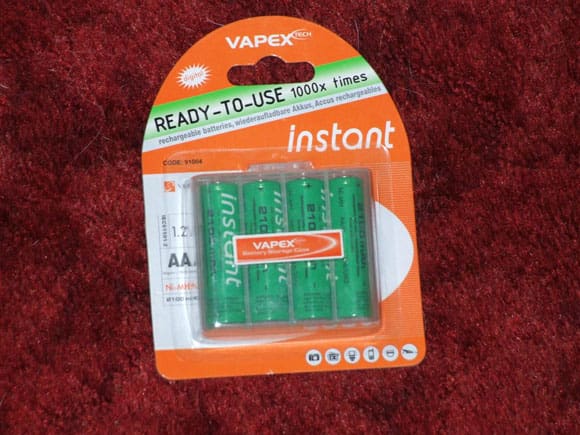
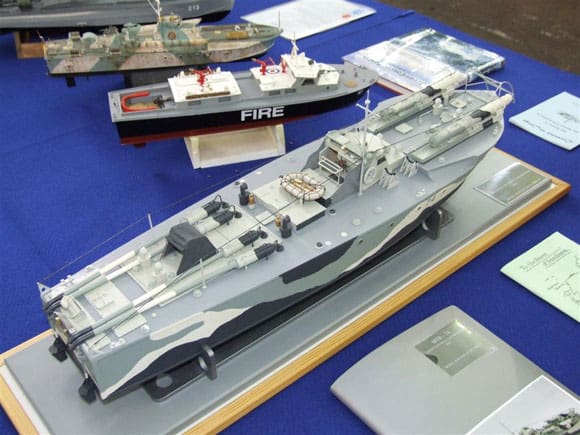
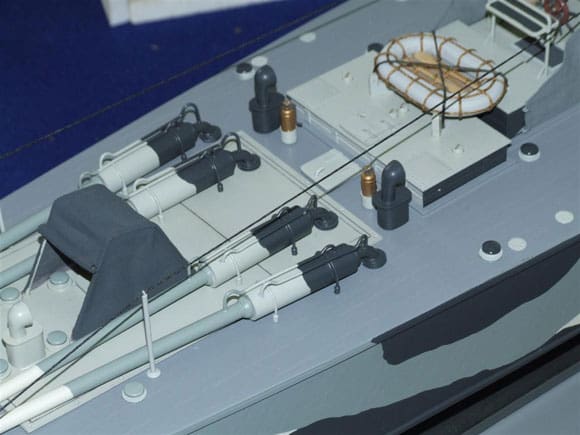
On the Victoria Model Steamboat Club stand was this model of the Lykes Lines Arthur Middleton, Photo 24. Built in July 1942 at Mobile, Alabama as a Liberty Ship, on January 1st 1943 she was torpedoed by U73 off Oran, North Africa. She was carrying 5,000 tons of explosives. Of the eighty three crew, only three survived. The model was built by Tony Townsend.
Photo 25 is of SS Ceylon, on the Northolt Model Railway Club stand. There are no owner or builders details but notes describe the model as steam driven with a wooden hull and tinplate decking and housing. The model is to a scale of 1:60. Photo 26 is of the steam plant. It is believed to have been bought in the 1930’s as a reproduction of the original builder’s model. There is a request for further information about the model.
Photo 27 is of MFV1174 on the Romford Model Engineering Club stand. Built by Ken Elliot, the model is based on the full size (97ft) vessel. The original was powered by a Lister Diesel which gave a speed of 8.5 knots. She had a crew of nine and was armed by .303 machine gun. The model is built plank-on-frame and the casing and other fittings are metal, Photo 28. It is driven by a 9V motor and uses two channel radio.
On the Society of Harrow and Wembley Model Engineers stand we spotted this very nice model of the old Veron Police Boat, Photo 29. The notes with the model refer to the original (full size) boats being built at Tough Brother’s yard on the Thames in the 1950’s. The kit from Veron was introduced in the ‘50’s and was a popular model, being built primarily from balsa wood and ply. This version – no owner’s details – is radio controlled and is now in use by the owner’s grandchildren.
As usual, the Steamboat Association of Great Britain had bought along a full–size boat to the exhibition. Photo 30 is of the boiler and engine in the Little Lamb. Originally built as a lifeboat for trawlers, the hull was fitted out with a new boiler and a single cylinder engine machined from castings. The boat is owned by David Molyneux.
On the trade stands, of which there were many but of course mostly model engineering based, Shestos were displaying a range of Badger airbrushes and accessories, Photo 31, as well as a range of electric mini–drills. As Paul has mentioned in the past, a small/medium sized lathe has many uses in our side of the hobby, especially for those who scratch build. There was this entry level lathe, Photo 32 on the Arc Euro Trade stand. This baby lathe, in its basic form, retailed at a show price of £110. It had a swing of 110mm and the distance between centres was 125mm. Standard equipment was a three-jaw chuck, dead centre and toolkit.
John Poll on the Modelpower stand introduced us to some new pre-charged, ready to use rechargeable batteries, Photo 33. One of the problems we suffer from, both from the modelling and photography perspective, is that the NiMH batteries we use self discharge too quickly. These new batteries are claimed to be ready to use at the time of purchase, and after six months of storage should still have about 80% of capacity remaining. Available in AA and AAA sizes, the AA’s have a capacity of 2100mA and both sizes retail at £4.95 for four. More information from www.modelpower.co.uk email: [email protected]. Finally, a couple of pictures of Dave Abbott’s new exact scale model, MTB 74, Photo 34. This is shown as it was modified for the St. Nazaire raid in 1942. Note the exhausts on the after deck, Photo 35.
Well that’s all for this month, our thanks to Meridienne Exhibitions for their invite to Alexandra Palace. Happy Boating from Paul and Dave.



